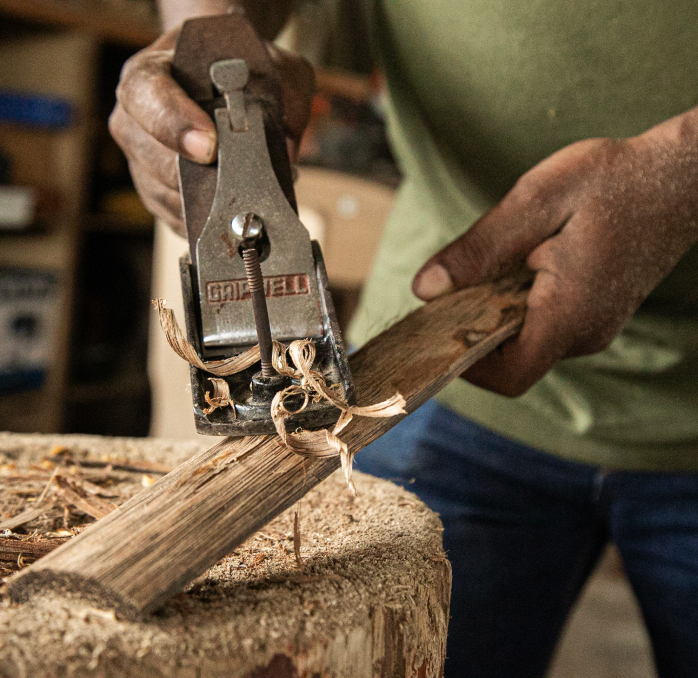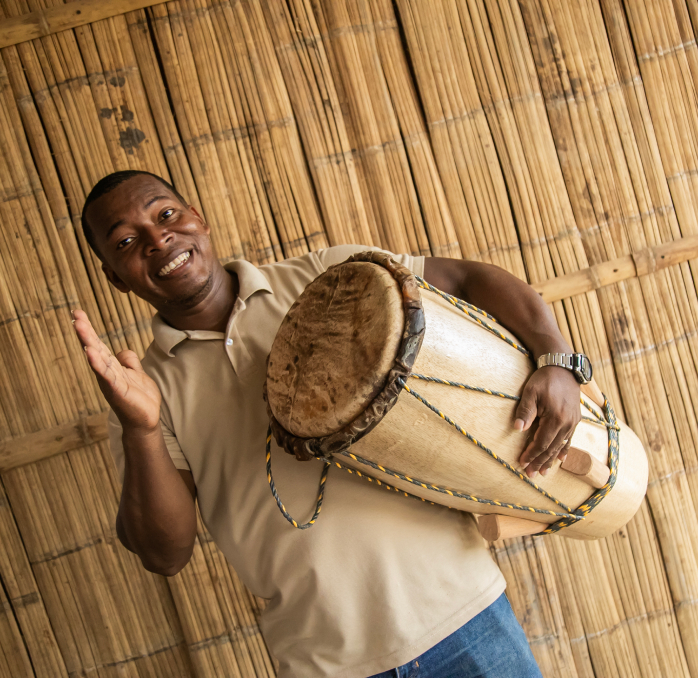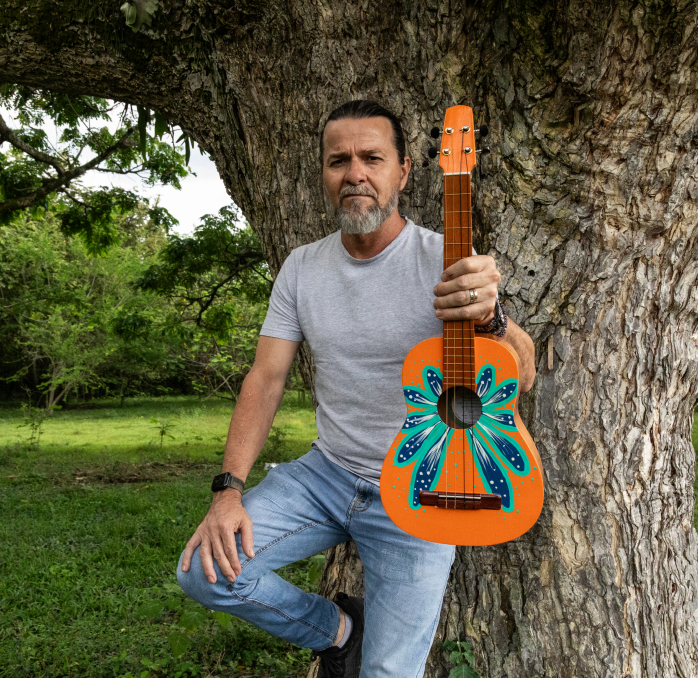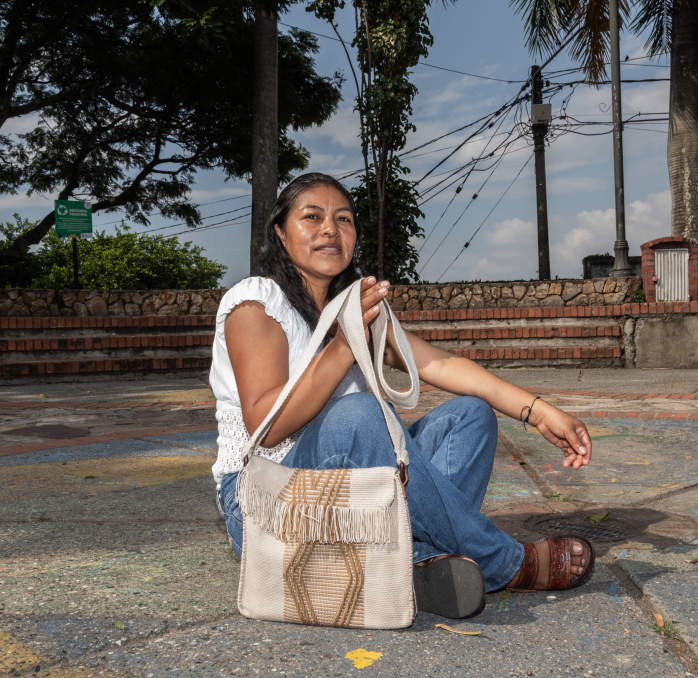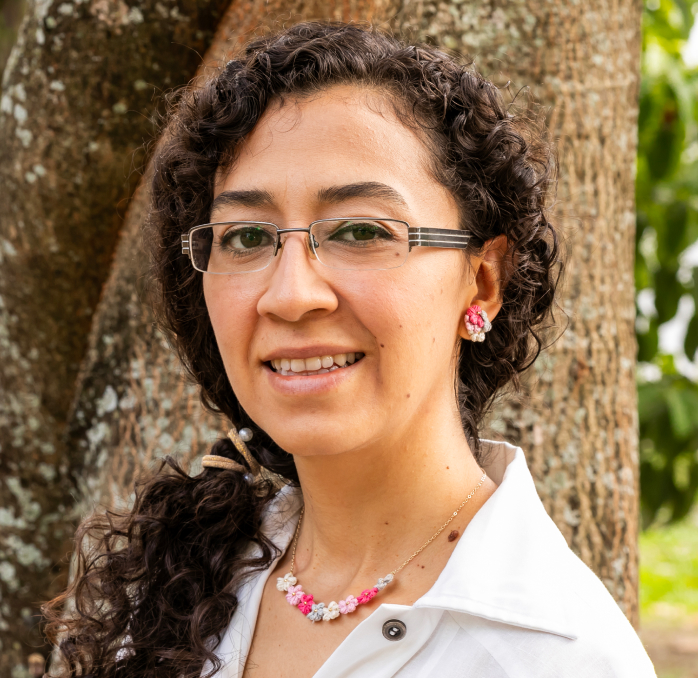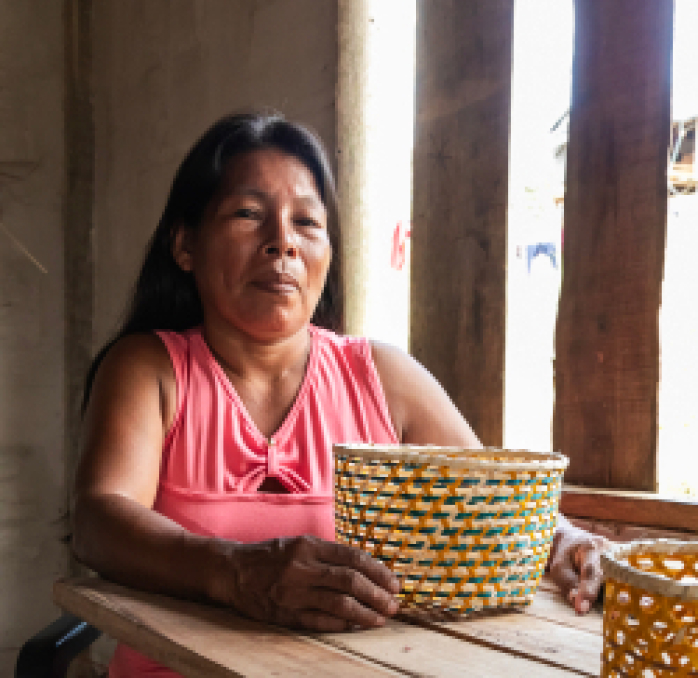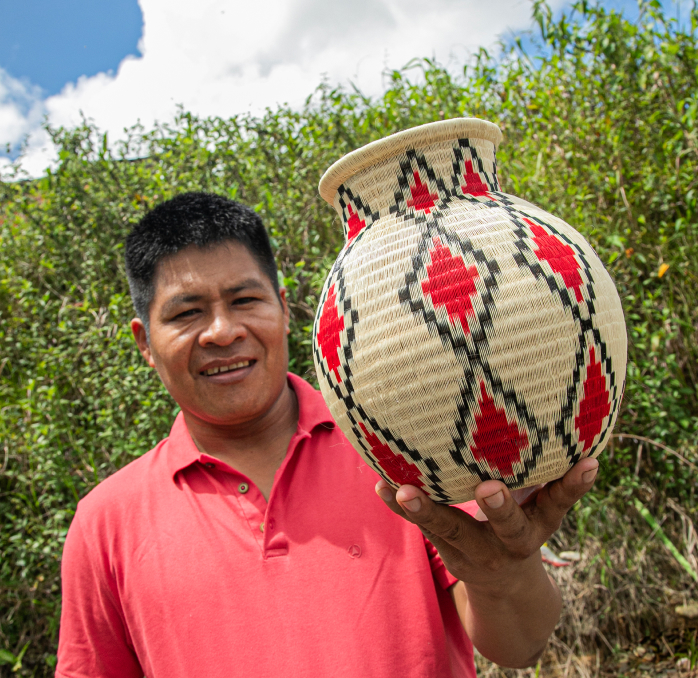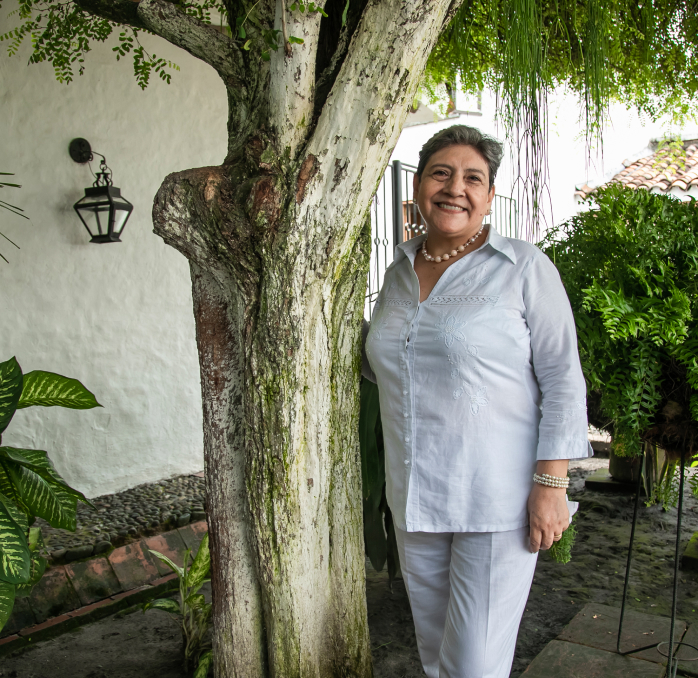Alí Cuama Valencia
Workshop: Casa de la marimba
Craft: Luthería
Trail: Valle del Cauca route
Location: Buenaventura, Valle del Cauca
The traditional rhythms of the Colombian Pacific coast, such as currulao, bambuco viejo, bunde, and juga, all find their musical instruments through the hands of Ali Cuama Valencia at his workshop, Casa de la Marimba, in Buenaventura. Here, he manufactures the bombos, cununos, marimbas, and guasás. Twelve years ago, Ali, a musician himself, traded his role as a music teacher to become an instrument maker, partnering with his lifelong friend and right-hand man, musician Jhon Edward Alomias.
Ali is the son of the luthier and avowed marimba player Baudilio Cuama who, for years, has taught young men the art of playing this instrument. Before arriving in Buenaventura, their family resided in the jurisdiction of Raposo, where Baudilio engaged in hunting, fishing, and cultivating taro, yam, plantain, banana, chontaduro, and sugarcane. Ali was eight when they moved to the city. His father, already skilled in marimba playing, out of necessity, became a luthier apprentice. He learned from the master Felisdeo Torres.
After watching everything his father did and given the increasing demand for pacific coast’s traditional instruments, which became popular thanks to music festivals such as the Petronio Álvarez in Cali, Ali chose to follow Baudilio’s path. Starting in his own front yard, Ali quickly outgrew the space. With the need for larger premises to accommodate efficient machinery, he embarked on building his current workshop. Here, he crafts bombos golpeadores, bombos arrulladores, both female and male cununos, marimbas, and guasás. The rhythms we know from the Pacific coast today are the result of a blend of cultures, instruments, and rhythmic expressions dating back to colonial times—a fusion between indigenous, black, and white communities. For instance, the local marimba has been clearly influenced by the balafón, a similar African instrument that uses calabash resonators instead of the exclusive bamboo resonators of the Colombian Pacific coast. Meanwhile, the guasá, a type of rattle made from bamboo canes and seeds measuring 40 to 50 cm in length, has indigenous origins.
The geographical territory in which these instruments have been traditionally crafted serves as a natural source of the woods and hides used in their production. For drums, bombos, and cununos, deer and hog leathers are utilized. It’s a custom that men who go on fishing expeditions carry their shotguns with them for the occasional hunting of deer and hogs, for their meat. In a span of three months, a hunter can collect around ten hides, which are then acquired by a canoe-traveling man who seeks out these hunters along riverbanks, delivering the hides to Ali in Buenaventura.
Regarding the woods used in the musical instruments, Ali has the fortune to live in a city that is also a port.Withut going too far, he can easily acquire chonta for marimba keys, balso macho for marimba, bombo, and cununo structures, and jigua negro for the special bombos. It was at this very port that Ali obtained the jigua laurel wood he used for manufacturing his first marimba, crafted when he was just sixteen. He selected this wood for its yellow shiny hue, its quality, and its resistance to moth damage. He aimed for an elegant marimba, one that he could take out for playing, adorned with arabesques similar to those on his parents’ bed. And it certainly drew the attention of people who couldn’t believe he had craftedit himself.
In the present day, Ali’s musical journey involves playing jugas, bundes, currulaos, bambucos, and rumbas as part of the musical ensemble Bombo Negro. This group of eleven musicians secured victory at the prestigious Petronio Álvarez Festival competition in Cali in 2018. Additionally, at his workshop in Buenaventura, fellow musicians and researchers converge to have an insight into the musical tradition he sustains through his dedicated craft.
Craft


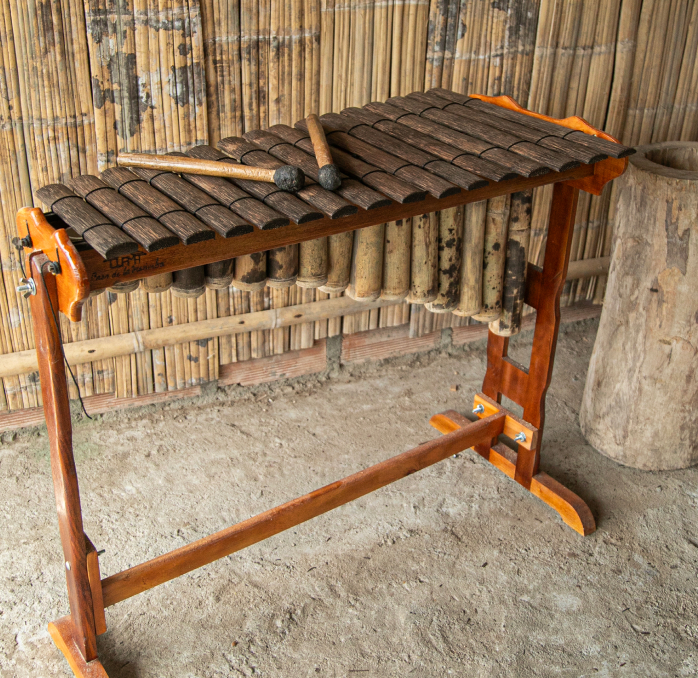











Artisans along the way
Artisans along the way
No puede copiar contenido de esta página










































